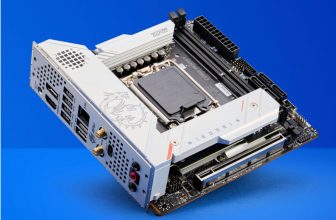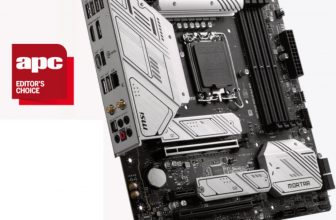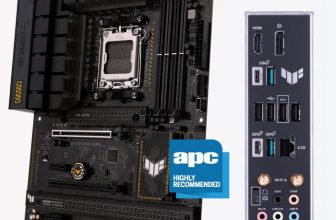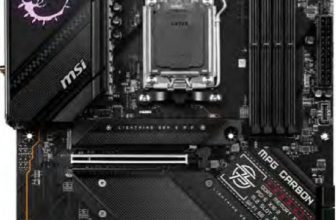MSI Z370 Godlike Gaming Review: MSI Z370 Godlike Gaming

MSI Z370 Godlike Gaming Review – Coffee Lake perfection when coffee lake first launched, it’s fair to say we were fairly apprehensive of the azure juggernaut’s response to Ryzen. After all, it came out of the blue. Kaby Lake officially launched in January 2017, and a meager nine months later, we gained its hex-cored successor. And there was a big problem: thermals. At first glance, Coffee Lake’s six-core flagship seemed nothing more than a hot-headed retort, an attempt to regain the lost ground Ryzen had claimed. Although impressive, with both price and performance being perfectly on point, skyrocketing past its predecessors, its thermal dynamics really put us off.
Table of Contents
Our launch sample came with an Asus Maximus X Hero motherboard, almost identical to the one we received with the Ryzen launch. No cause for concern there. However, temps were through the roof, reading 70-80 C at stock under load, with a 280mm AIO chilling the six-cored critter. At first, we chalked this up to the thermal paste between the die and the IHS still being the same poor quality crud used since the launch of Ivy Bridge, back in 2012.
But once we began to dig below the surface, it soon became apparent that this wasn’t the case. There was an issue with voltage. Even with the latest BIOS installed, the Maximus X Hero’s VCore was fluctuating between 1.3 and 1.4V. Now, by default, your standard Sky Lake chip ate its way through 1.2V at stock, yet it was possible to easily get it running, stable, at 1.12V with little issue, reducing load temperatures by around 10 degrees in the process. However, synthetic and real-world benchmark scores were high on the Maximus, and the architectural design effective, so we put it down to a generational quirk, with the additional cores simply requiring more juice.
MSI Z370 Godlike Gaming review: GODSPEED
In comes the MSI Z370 Godlike Gaming. Our second Z370 board on test, and the difference couldn’t be more dramatic. At stock, there’s just a small disparity (less than 5 percent) between our benchmark scores, both in synthetic and real- world tests. And that alludes to how this motherboard applies its VCore voltage. In other words, it does it right. At stock, we noticed a maximum 1.1V being pumped into the VCore, with very little in the way of V-Droop. At 1.3V, we even managed a concrete 5GHz across all cores, bumping those figures up comfortably to Ryzen 7 1800X levels of performance, but at a far lower cost with regard to temps.
That, however, is beside the point. This is a motherboard—and, boy, can you tell. It is absolutely packed to the brim with practically every feature MSI could fit on a board. Its E-ATX bulk houses support for three M.2 PCIe SSDs on the board itself,
| BENCHMARKS | ||
| MSI Z370 Godlike Gaming | Asus ROG Maximus X Hero | |
| X265 Benchmark (fps) | 28.32 | 30.65 |
| Cinebench R15 Multi (Index) | 1.422 | 1,553 |
| Fry Render (Seconds) | U2 | 133 |
| AIDA64 Memory Latency (ns) | 68.9 | 68 |
| Power Draw Idle (Watts) | 51 | 65 |
| Power Draw Load (Watts) | 186 | 198 |
| CrystalDisk Sequential Read (MB/s) | 569 | 532 |
| CrystalDisk Sequential Write (MB/s) | 506 | 501 |
| Far Cry Primal (Avg fps) | 62 | 62 |
| 3D Mark: Fire Strike Extreme (Index) | 9.682 | 9,785 |
| Maximum OC Achieved (GHz) | 5.3 | 5.3 |
| Best scores are in bold. Our test bed consists of an Intel Core i7-8700K, 16GB (2x 8GB) of Corsair Dominator Platinum DDR6 3200, an Nvidia GeForce GTX 1080, and a 500GB Samsung 850 Evo SSD. Far Cry Primal tested at Ultra at 6K. | ||
LOKI Price; price; price.
with an additional two via an add-in card. It features triple Gigabit Ethernet ports, with 5GHz Wireless A/C. For connectivity, you’re gifted with 7x USB 3.1 Type A ports, one USB 3.1 Type C port, and a combi port. Then, of course, we get to the audio. And, damn, is it juicy. Featuring an ESS Audio DAC, with its own dedicated amplifier, hi-fi grade WIMA capacitors, and dual (both front and rear) HD audio processors, the Godlike sounds stunning. It even has separate isolated PCB layers, unique to each left and right channel. Couple that with gold-plated 5.1 audio, optical out, and a full-size 0.25-inch headphone jack, and it’s enough to satisfy any audiophile.
The Godlike Gaming is a true testament to exactly what you can fit on the Z370 chipset. Its impressive design, clean aesthetics, dependable audio, and appropriate performance make it one of the best motherboards we’ve ever seen from MSI. And if this is any indication of how the rest of MSI’s lineup performs this generation, call us impressed. This is Coffee Lake done properly, -zak storey
MSI Z370 Godlike Gaming review
ODIN Correct voltage management; solid overclocking; clean aesthetic; extensive expandability; incredible networking; premium audio; no auto-overclocking.
MSI Z370 Godlike Gaming review: SPECIFICATIONS
| Chipset/Socket | Z370/1151 |
| Form Factor | E-ATX |
| Memory Support | 66GB DDR6 @ 4.133MT/S |
| M.2/U.2 Support | 3+2 M.2. 1x U.2 |
| SATA Support | 6 |
| Max PCIe Support | 6x PCIe x16 |
| Rear I/O | 3x Gigabit Ethernet.
1x Wireless A/C. 1x PS/2 port. 7x USB 3.1 Type A. 1x USB 3.1 Type C. 5.1 audio, optical audio out. 0.25-inch headphone jack |
When you purchase through links on our site, I may earn an affiliate commission. Here’s how it works.











